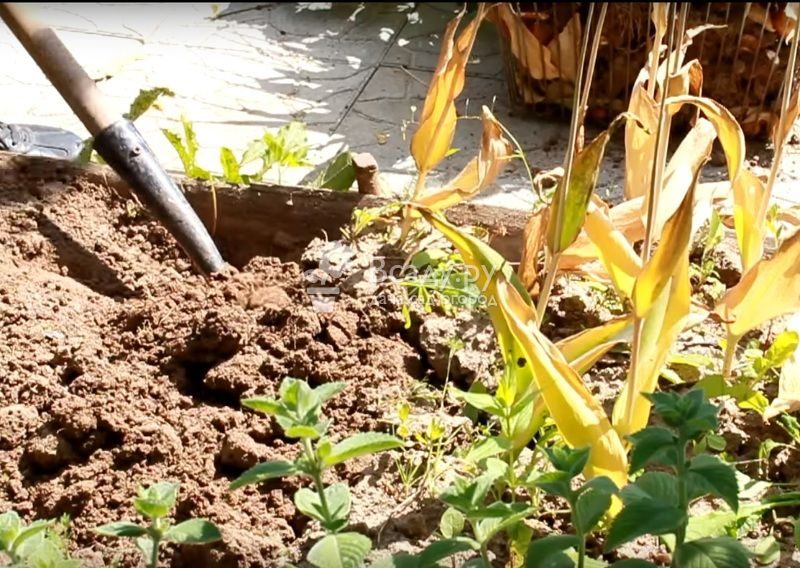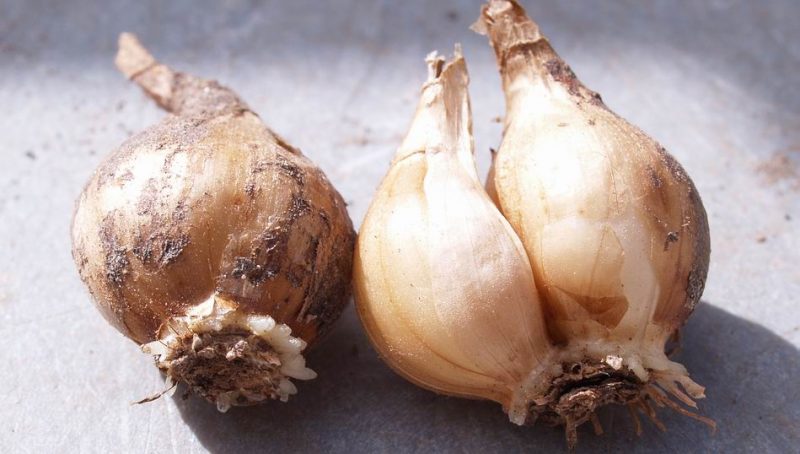In many regions of Russia, daffodils are the first flowers to bloom after a long winter. In addition, if the daffodil was previously considered a symbol of beauty, then what can we say in our time, when dozens of varieties of this amazing plant are bred - one more beautiful. Of course, every lover wants to preserve the flowers already on the site and increase their number.
An important point can be called the process of digging daffodils and re-planting bulbs. Does this need to be done annually?
Material Content:
How and when to dig daffodil bulbs after flowering?
When to dig daffodils? This is done after flowering, during the period when the leaves begin to turn yellow, and the stems lie on the ground. This usually happens by the end of June. If you can’t regularly devote time to working in the garden, then there is a risk that on a site that is covered with lush greenery in early summer, you won’t be able to pinpoint where the daffodil bulbs are hidden underground. In this case, you can damage them by digging at random.

Therefore, the places where daffodils are planted, it is better to "mark" in advance - at the time of flowering, put the sticks, tying bright ribbons to them.
Please note - after the end of flowering, the leaves of daffodils do not cut, give them the opportunity to completely dry. It is at this time that flower buds are laying, which will delight you next year, and daffodils receive part of the necessary nutrients through leaves and peduncles.
If you have not cut blooming daffodils, then after withering the petals, you can remove with a sharp knife only a seed box.
The need for a procedure every year
Do I need to dig daffodils every year? Not necessary - usually transplanted every 4-5 years.
However, there are situations when it is advisable to regularly remove the bulbs from the ground. For example, you suspect daffodils are sick. Then, after digging up, you will be able to examine the nest of bulbs, immediately select and destroy the sick.

To give an exact answer to the question regarding digging, we turn to botany. Each bulb has a bottom and a crown of roots. The root system lives up to 11 months, new roots grow to replace the old ones. At the top of the bottom there is a kidney of renewal, at the base of which there is a roller. Scales surround the kidney. Between them, the plant lays the buds of daughter bulbs. They are separated and become independent after 2-4 years. So 4-5 years - this is the optimal time for digging, and then planting daffodils.
If you intend flowers for distillation - you will need a large bulb, without children. It is in this case that daffodils are dug up every summer.
Have you got new green pets? Read carefully the information for each particular variety. Some daffodils can weaken from frequent transplants, and stop flowering.
It is interesting:outdoor daffodils
Digging Precautions
Narcissuses have practically no pronounced dormant period, so they try to dig them out later and plant them early.
Dig daffodils with a clod of earth so as not to harm the bulbs.
If daffodils grew for several years in one place, then the nest of bulbs can be so large that the plants will interfere with each other, and the number of flowers will be reduced.
Bulb extraction rules are simple:
- when digging daffodils, it is better to use not a large garden shovel, but a special shovel for indoor flowers;
- after removing the bulbs from the ground - the leaves are carefully trimmed;
- roots cannot be cut, they are given the opportunity to dry;
- the bulbs are carefully separated from each other.
It is best to get rid of the soil adhering to the bulbs this way. Give him the opportunity to dry, and then gently shake the bulbs - the excess land will crumble itself.
Some gardeners, to make it easier to separate the bulbs, lower them into a container of water. This is not recommended. If at least one of the onions turns out to be sick, the rest will become infected thanks to the aquatic environment.
Bulb storage rules
Bulbs are laid out in the open and allowed to dry.
Please note - the direct rays of the hot summer sun should not fall on the bulbs of daffodils - otherwise they may get burned. In the case of wet weather, daffodils are transferred to the room.

Then, until planting, they are cleaned in a cool, dark and dry place. A closet, a cellar, a barn will do. It is desirable that the temperature where the bulbs will be stored does not exceed + 16-17 C.
An important point - the air should have free access to daffodils. It is best to put them in open boxes, you can - in rows, laid out with paper. In no case should bulbs be stored in plastic bags.
Inspect daffodils about once a week. If some have begun to decay, or another disease has manifested, such bulbs are removed.
It is not recommended to store planting material for more than 4 months, otherwise the bulbs will begin to deteriorate already intensively.
Is treatment necessary?
If the bulbs look strong and healthy, you can optionally not process them. But in order to avoid additional risk, it is better to keep all the planting stock for 15-20 minutes in a pink (weak) potassium permanganate solution. This will disinfect them.
Dates of planting in the ground
Bulbs should be planted at the end of August or in September - before the start of frosts. Then they will have time to take root before the cold, but they will not start to grow.
You can plant the bulbs in their original place, but usually, once every 3-5 years, the flowers are transferred to a new flower bed. During this time, the land on the old site is depleted, it may contain microorganisms harmful to daffodils.
Dig a hole for the daffodil depending on the size of the bulb, usually a depth of 15-20 cm. A little sand is put on the bottom to provide a drainage layer. Fertilize the earth.
The place where daffodils are planted can be covered with dry grass, fallen leaves. This will serve as additional protection against freezing.
Today, flower growers have the opportunity to purchase varietal daffodils of remarkable beauty. They are used for cutting, for decorating the garden, creating compositions, for distillation. The situation when plants perish is very sad. Observing simple rules, you can annually admire the beautiful "carpet" of flowering daffodils.












